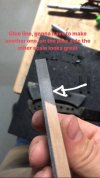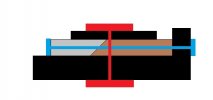- Joined
- Aug 5, 2014
- Messages
- 378
I just did my second set of “dovetailed” bolster multi piece scales on a fixed blade consisting of the bolster, main scale, and liner material. After having a very small glue line on one of the scales and now having to redo that one I’m curious if people have a good system for glue up on these. I have the glue line because the bolster wasn’t clamped down to the liner tightly enough and ever so slightly rode up the 45deg cut. I loosely clamped the main scale and bolster to the liner then clamped the ends pushing the 45 together then went and tightened up the clamps holding the two scales pieces down to the liner. Is there a better way to do this? Thanks!


